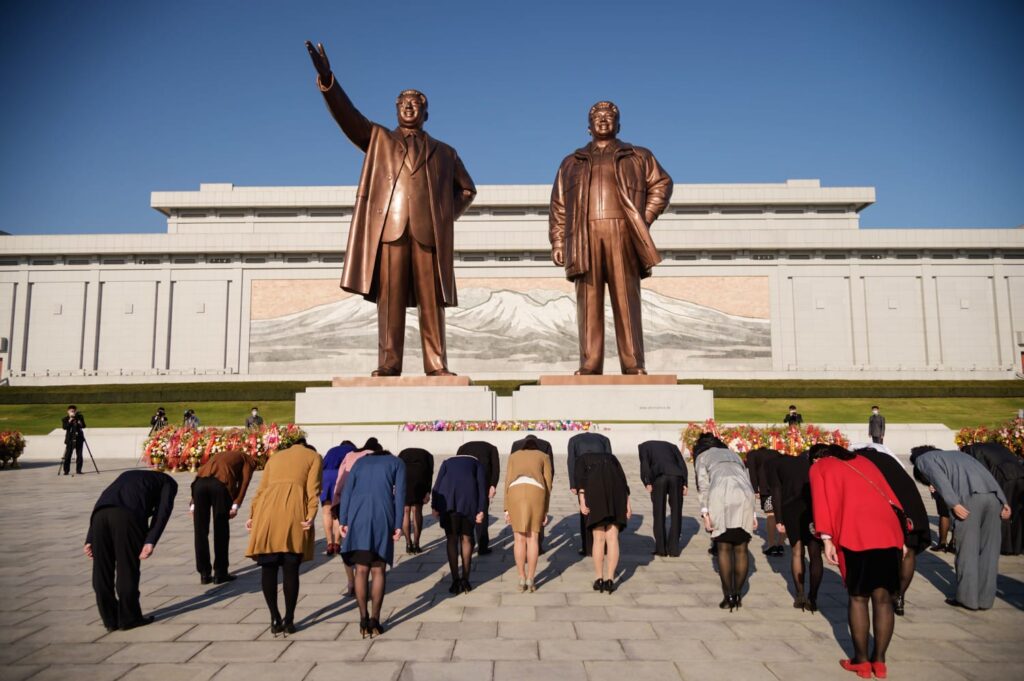
Experts say move signals plans to revive economy through tourism
For the first time in five years, North Korea has allowed a group of foreign tourists to visit, signaling a potential full reopening of its international tourism sector. Experts suggest this could be an effort to generate much-needed foreign currency to support the country’s struggling economy.
A Beijing-based travel agency, Koryo Tours, arranged a five-day trip from February 20 to 24 for 13 international tourists to the northeastern border city of Rason, home to North Korea’s special economic zone. Travelers from the UK, Canada, Greece, New Zealand, France, Germany, Austria, Australia, and Italy entered the country via land from China.
During their stay, the tourists visited factories, shops, schools, and statues of former leaders Kim Il Sung and Kim Jong Il, according to Simon Cockerell, general manager of Koryo Tours.
“Since January 2020, North Korea has been closed to all international tourists, and we are glad to have finally found an opening in the Rason area, in the far north of North Korea,” Cockerell said. He added that more group and private tours are now being arranged.
North Korea’s gradual reopening after strict COVID-19 restrictions
In response to the COVID-19 pandemic, North Korea shut its borders in early 2020, expelling diplomats and implementing some of the world’s most extreme travel restrictions. However, the country has been slowly reopening since 2022.
The first group of foreign tourists allowed into North Korea since the pandemic was approximately 100 Russian visitors in February 2024. In total, around 880 Russian tourists visited throughout the year, according to South Korea’s unification ministry, citing official Russian data.
Many observers had expected China, North Korea’s largest trading partner and closest ally, to be the first to resume sending tourists. However, organized group tours from China remain on hold.
Experts believe the increase in Russian tourism reflects the strengthening ties between North Korea and Russia, particularly as North Korea has supplied weapons and troops to support Russia’s war in Ukraine. Meanwhile, relations between North Korea and China have cooled, with China showing reluctance to join a formal three-way alliance with North Korea and Russia against the United States.
Tourism as a key economic lifeline for North Korea
Before the pandemic, tourism provided North Korea with a rare source of legitimate foreign currency, as the country faces heavy international sanctions due to its nuclear program. The majority of foreign tourists came from China, accounting for more than 90% of international visitors.
North Korea is set to open a large-scale tourism complex on the east coast in June. This aligns with comments made in January by President Donald Trump, who, while discussing his past interactions with Kim Jong Un, remarked, “I think he has tremendous condo capabilities. He’s got a lot of shoreline,” likely referring to this new development.
Lee Sangkeun, an expert at South Korea’s Institute for National Security Strategy, noted that before the pandemic, up to 300,000 Chinese tourists visited North Korea annually. He suggested that North Korea is now eager to restart its tourism industry, particularly targeting international visitors.
“North Korea has invested heavily in tourism sites, but domestic demand has remained low,” Lee said. “This move suggests North Korea is seeking to attract a significant number of foreign tourists.”
Challenges in expanding North Korean tourism
Despite its efforts to boost tourism, North Korea’s strict control over foreign visitors may limit its appeal. Tourists are typically required to move under the supervision of local guides, and photography is often restricted in sensitive areas.
According to Lee, North Korea is likely to focus on developing tourism in areas where it can closely monitor visitors, such as Rason, the east coast resort site, and the capital, Pyongyang.
The return of Chinese tourists would be crucial for North Korea to fully revive its tourism sector, but whether Beijing will allow large-scale group visits remains uncertain.






